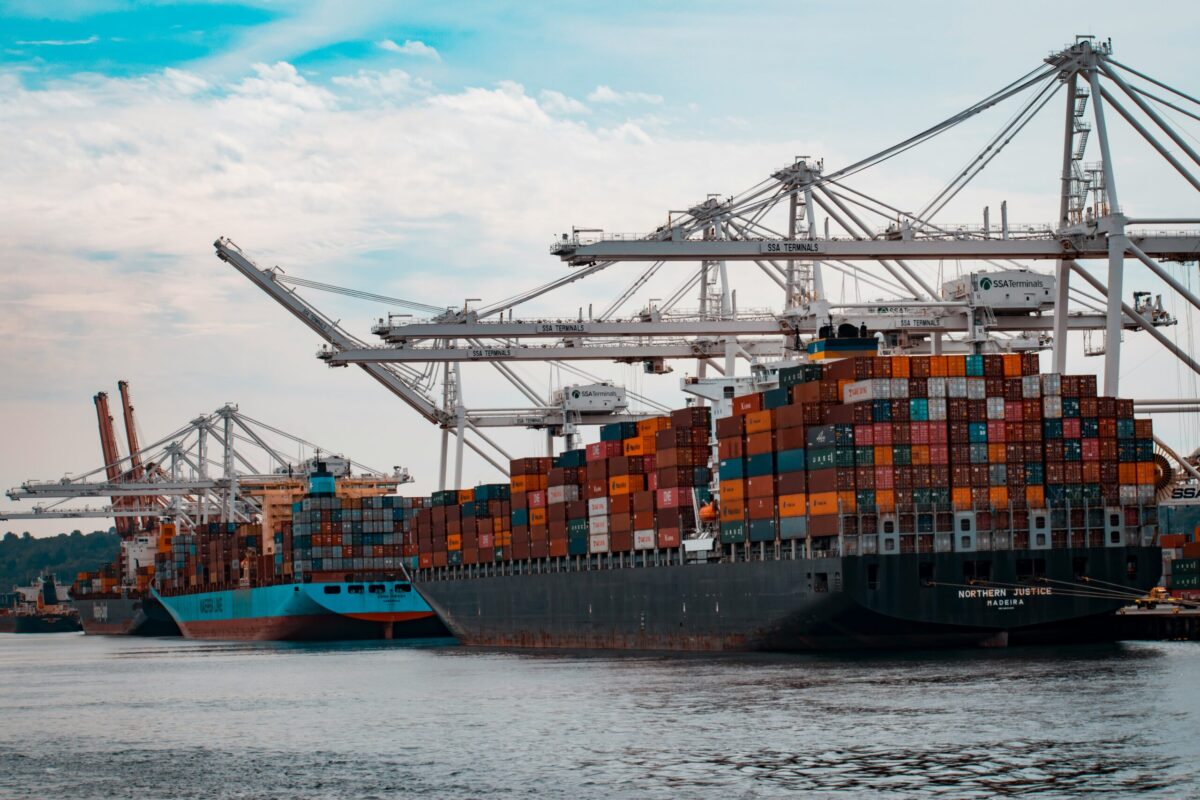The on-shoring of US manufacturing (bringing production back to domestic soil from overseas) has gained momentum as companies seek to mitigate supply chain risks, improve quality control, and respond to growing economic and geopolitical pressures.
This shift, driven by recent disruptions and policy incentives, is set to transform domestic supply chain management and carrier capacity over the next 12 months. While on-shoring promises shorter lead times and greater supply chain resilience, it also presents challenges, including the need for significant investment in infrastructure and potential strain on transportation networks. This article explores these impacts and what businesses can expect in the coming year.
Impact on Domestic Supply Chain Management
On-shoring is poised to reshape supply chain management by creating shorter, more agile networks. With manufacturing closer to end markets, companies can reduce lead times and transportation costs while improving responsiveness to demand fluctuations. This proximity allows for quicker adjustments to production levels and inventory, a critical advantage in an era of unpredictable consumer behavior and global disruptions. For example, companies like General Electric and Intel have already begun investing in domestic production facilities to reduce reliance on overseas suppliers and enhance supply chain resilience. However, these benefits come with challenges.
Building or upgrading manufacturing facilities requires substantial capital investment, and companies may face difficulties sourcing raw materials domestically. The transition can be slow and costly, particularly for industries that have long relied on global supply chains. Additionally, labor shortages in key sectors could disrupt production and delay the full benefits of on-shoring. Rising labor costs and the need to train a new workforce add further complexity. These factors suggest that while on-shoring can streamline supply chains, it may also introduce new challenges that require strategic planning and investment.
Benefits of Shorter Supply Chains
- Reduced Lead Times: Proximity to markets cuts down delivery times, enabling faster fulfillment.
- Improved Responsiveness: Companies can adjust production more quickly to meet changing demand.
- Lower Transportation Costs: Shorter distances reduce shipping expenses, though this may be offset by other factors like higher domestic labor costs.
Challenges to Overcome
- Infrastructure Investment: New or upgraded facilities demand significant upfront capital.
- Raw Material Sourcing: Dependence on imported components could lead to bottlenecks if domestic alternatives aren’t readily available.
- Labor Constraints: A shortage of skilled workers may slow production ramp-up.
Impact on Carrier Capacity
The shift toward domestic manufacturing will also have a profound effect on carrier capacity, particularly in the trucking and rail sectors. As more goods are produced and shipped within the US, demand for domestic transportation services is expected to surge. This could tighten capacity in already strained markets, where driver shortages and infrastructure bottlenecks are persistent issues. The increased demand for transportation could drive up freight rates, especially for trucking, which handles the bulk of domestic shipments. Rail and air freight may also feel the pressure, though to a lesser extent.
Businesses may face delays and higher shipping costs as carriers struggle to meet demand. For example, trucking capacity could be further strained by ongoing driver shortages, while rail networks may require upgrades to handle increased volumes. Companies might need to explore alternative transportation options, such as intermodal services (combining truck and rail) or less-than-truckload (LTL) shipments, to mitigate these constraints.
Transportation Modes Affected
- Trucking: The primary mode for domestic freight, likely to see the most significant capacity crunch.
- Rail: Increased volumes could strain infrastructure, though less acutely than trucking.
- Air Freight: May see marginal impacts for high-value, time-sensitive goods.
Potential Outcomes
- Tighter Capacity: Higher demand could outpace carrier availability, leading to delays.
- Rising Freight Rates: Increased competition for limited capacity may drive up costs.
- Logistics Innovation: Businesses may turn to technology and alternative shipping methods to adapt.
Real-World Examples
Several major companies have already embraced on-shoring, offering a glimpse into its impacts. General Electric has invested in domestic appliance production, aiming to shorten supply chains and improve quality control. Similarly, Intel is building new semiconductor factories in the US to bolster supply chain security amid global chip shortages. These moves highlight the potential for greater resilience but also underscore challenges like higher labor costs and the need for workforce training, which can slow the transition.
The Role of Technology
Technology will be a linchpin in managing the shift to on-shoring. Advanced supply chain management software can provide real-time visibility into inventory, production schedules, and transportation logistics, enabling data-driven decisions. Automation and robotics can offset higher labor costs by boosting manufacturing efficiency and reducing manual labor needs. For carriers, route optimization tools and predictive analytics can help maximize capacity and minimize delays, ensuring goods move smoothly despite tighter markets.
Looking Beyond 12 Months
While this article focuses on the next year, on-shoring’s long-term implications are worth noting. A sustained trend could create more domestic jobs and shift the US manufacturing landscape toward greater self-reliance. However, it might also raise consumer prices if businesses pass on higher production costs. Over time, investments in infrastructure and technology could mitigate these challenges, paving the way for a more robust supply chain ecosystem.
Preparing for the Shift
Businesses can take proactive steps to navigate on-shoring’s impacts over the next 12 months:
- Leverage Technology: Invest in software for supply chain visibility and automation to enhance efficiency.
- Explore Alternatives: Use intermodal or LTL shipping to ease reliance on trucking.
- Build Flexibility: Diversify suppliers and transportation partners to buffer against disruptions.
- Monitor Costs: Plan for potential increases in freight rates and labor expenses.
The on-shoring of US manufacturing will significantly influence domestic supply chain management and carrier capacity over the next 12 months. Shorter supply chains promise reduced lead times and greater agility, but businesses must contend with infrastructure costs, labor challenges, and raw material sourcing. Meanwhile, surging demand for domestic transportation could tighten carrier capacity and raise freight rates, pushing companies to innovate. By investing in technology, diversifying logistics options, and planning strategically, businesses can turn these shifts into opportunities, positioning themselves for success in a rapidly evolving market.
Partnering for the Future
As the logistics landscape continues to evolve with the on-shoring movement, having the right partner can make all the difference. Native American Logistics (NAL) is uniquely positioned to help businesses navigate these changes with agile, cost-effective, and reliable transportation solutions. Whether you’re restructuring your supply chain, seeking flexible capacity, or exploring cross-border logistics, NAL brings deep industry expertise and a proactive approach to every shipment. Connect with us today to explore how we can support your business through this next wave of supply chain transformation.

Jeff Berlin
is the Chief Operating Officer of E.L. Hollingsworth & Co. and serves as the Senior Operations Executive for TOP Worldwide and Native American Logistics. With over 30 years of experience leading logistics and trucking companies, he brings deep industry expertise to his role. Jeff is also a CDL-A driver and a private pilot. Contact Jeff at jberlin@elhc.net.
 +1 877 781 3006
+1 877 781 3006 (52) 554-870-5682
(52) 554-870-5682



